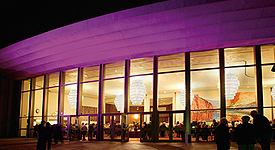
The most widely recommended technique for pruning is selective pruning, which is the process of selecting individual branches to be pruned, rather than random shearing. Unfortunately, this is not the most widely practiced method. It's easy to do and can reduce the frequency at which shrubs are pruned. Plants that are selectively pruned require less maintenance which can result in significant cost savings.
Selective pruning is primarily the removal of foliage and stems so that the plant is returned to its natural shape. Using this method will allow plants to bloom to their full potential creating colorful, lush, interesting landscapes.
It also maintains the natural shape of the plant and allows sunlight and air movement throughout the plants. This is important to reduce the occurrence of diseases and insects. Selectively pruned plants soften the man-made structures and will enhance and embellish the setting.
Shrubs and Groundcover Pruning

Shrubs: DO
Prune shrubs once per year to maintain a full, flowering and natural shape.

Shrubs: DON'T
Costly over pruning once per month prevents flowering, promotes woody growth & requires more water after frequent pruning.

Groundcover: DO
Less trimming by allowing plants to grow together only top trimming and angle trimming at edges required.

Groundcover: DON'T
Each individual groundcover is pruned separately which is time consuming & wasteful. Lack of trimming top of ground covers makes plants appear as small shrubs. Square pruning at edges at sidewalk/curbs forces the necessity for frequent trimming to keep plants off of sidewalk/curbs.
Steps to Selective Pruning
Selective pruning is typically done after the flowering season. Using this simple technique, plants are returned to an informal, rounded form or a desired size. Then every other branch is cut back to the first large “V”, or side branch, usually removing a piece about 6 – 9 inches long. This results in an informal, natural look and opens up the interior to sunlight, helping to develop new flowering wood.

Step #1: Use hand pruners to cut branches and stems to buds or laterals creating an informal rounded shape.

Step #2: Cut every other branch to a lateral, varying the length of branches to create a natural form.



